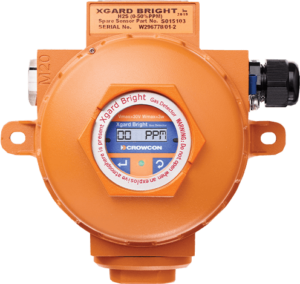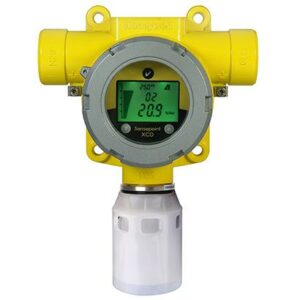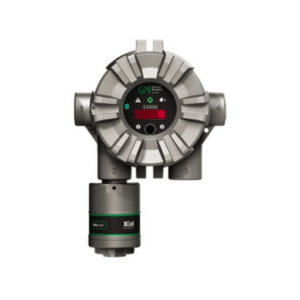
5 Key Benefits of Gas Detection in EV Battery Facilities
The rapid growth of electric vehicles (EVs) has led to a surge in demand for lithium-ion batteries, the cornerstone of EV technology. While the shift towards electric transportation is a significant step in reducing carbon emissions, the production of these batteries can pose significant safety risks if not handled with utmost care. One crucial aspect of ensuring safety in EV battery production is the implementation of robust gas detection systems.
5 Key Benefits
Gas detection is crucial in EV (electric vehicle) battery storage and production due to several risks, including the possibility of thermal runaway, as well as the release of harmful gases during manufacturing, storage, and operation. Here’s why it’s essential:
1. Thermal Runaway:
- What is it?: Thermal runaway occurs when the temperature within a lithium-ion battery rises uncontrollably, leading to further increases in temperature, potential fire, or explosion. It can be caused by overcharging, short-circuiting, or physical damage to the battery.
- Gas Emission: During thermal runaway, the battery can emit toxic and flammable gases such as carbon monoxide (CO), hydrogen fluoride (HF), and volatile organic compounds (VOCs). These gases can pose a serious hazard to workers and the facility if not detected and managed early.
2. Manufacturing Processes:
- Chemical Exposure: During the production of lithium-ion batteries, chemicals like electrolytes and solvents are used, which can release toxic gases. Workers are at risk of exposure to harmful gases such as HF, phosphine, and sulfur dioxide (SO₂) during the battery’s assembly or when any materials are mishandled.
- Gas Detection for Safety: Early detection of any gas leaks is crucial to protect workers from inhaling toxic fumes and to avoid fire or explosion risks in the production environment.
3. Battery Storage:
- Degradation and Gas Buildup: Batteries, even in storage, can degrade over time, leading to the release of gases. In large-scale storage facilities for EV batteries, this gas buildup poses both fire and health risks.
- Ventilation and Monitoring: Gas detection systems are essential to monitor the air quality and ensure proper ventilation in these storage areas to avoid any dangerous accumulation of gases like hydrogen or CO.
4. Fire Prevention:
- Early Warning: Gas detection systems can act as an early warning mechanism before visible signs of fire occur. The release of flammable gases, especially in enclosed storage environments, can lead to explosions if not controlled.
5. Safety Compliance:
- Regulatory Requirements: Many countries and industries have regulations requiring gas detection systems in battery storage and production facilities to ensure worker safety and prevent environmental hazards.
Gas detection is vital in the EV battery industry for ensuring safety during both production and storage. It helps prevent thermal runaway incidents, where overheating batteries release toxic and flammable gases like carbon monoxide (CO) and hydrogen fluoride (HF), which can lead to fires or explosions. In manufacturing, gas detection safeguards workers by identifying harmful chemicals such as HF, phosphine, and sulfur dioxide (SO₂), reducing health risks and the chance of accidents. During battery storage, gas detection systems monitor for gas buildup caused by battery degradation, preventing dangerous accumulations of gases like hydrogen. Additionally, these systems offer early warnings for fire prevention and help facilities comply with safety regulations, ensuring the protection of both workers and the environment.

Crowcon Xgard Bright is a fixed gas detection system, designed to meet stringent standards, including ATEX and IECEx, Xgard offers peace of mind, ensuring compliance with legal requirements.
The Xgard Bright can detect a wide range of gases, including toxic, flammable, and oxygen-depleting gases. This versatility makes it ideal for EV battery storage, where harmful gases like carbon monoxide (CO), hydrogen fluoride (HF), and hydrogen could be released.
Find out more today: Crowcon Xgard Bright Fixed System | Rockall Safety

The Sensepoint XCD can detect a variety of gases, including flammable gases, toxic gases (such as CO, H2S), and oxygen. In EV battery storage, gases like hydrogen (H₂) can be released during battery charging or thermal runaway, and this detector can monitor such hazards.
The Sensepoint XCD is easy to install and maintain, and it offers a long service life. It is a cost-effective solution for protecting people and property from the hazards of gas leaks.
Find out more today: Honeywell Sensepoint XCD Fixed Gas Detector | Rockall Safety

MSA General Monitors S5000 Gas Monitor
The S5000 can detect a wide range of gases, including flammable gases (e.g., hydrogen), toxic gases like carbon monoxide (CO), and oxygen deficiency or enrichment. In EV battery storage, hydrogen is of particular concern, as it can be emitted during charging or thermal runaway events.
The S5000’s capability to detect hydrogen and other gases ensures comprehensive safety coverage.
Find out more today: MSA General Monitors S5000 Gas Monitor | Rockall Safety
By investing in reliable gas detection systems, EV battery manufacturers can create a safer and more efficient production environment, protecting the health and well-being of their workers while ensuring the sustainability of their operations.
Luckily, Rockall Safety offer a full turnkey service, meaning that they will be with you from start to finish and provided ongoing support whenever it is necessary. Our expert team can work with you to find the perfect gas detection system for your premises, just give us a call today and we can get you started!
To read all about our full turnkey service, click here.
Contact Us
Check out our Youtube channel here: Rockall Safety & Ad Fuels – Providing Peace of Mind (youtube.com)





